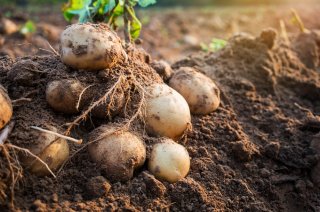
Feed the soil and fertilize the crops within a circular food systems
To secure soil quality, different types of fertiliser are used to provide nutrients to the soil and fertilise the crops. Plant by-products and crop-residues can directly be used as plant fertiliser. However, by-products can also be fed to farm animals to produce animal-sourced food for humans, and subsequently recycle the animal and human excreta back to the soil.
The potential of nutrient application
Although recycling by-products and crop residues as fertilisers is a condition and not an option for a circular food system, there are some challenges related to the use of organic instead of mineral fertilisers. Unlike mineral fertilisers, nutrients in organic fertilisers can only be taken up by the roots after the organic material has mineralised. Mineralisation occurs throughout the year, not only in the growing season. Nutrient release from organic material, therefore, might be poorly synchronised with crop demand, increasing the risk of losses. Moreover, the composition of organic fertilisers, certainly unprocessed ones, is highly variable across farms and seasons, and as such, does not always match the requirements of the plants, which also results in risks of losses. Finally, nutrients are highly diluted in organic fertilisers and are only available in fixed ratios, which may not necessarily match crop requirements, and/or might be contaminated.
Explore fertilisers
At the same time, we know that by-products and crop residues do not bring new nutrients into the food system, and that zero-emission agriculture is unrealistic, implying that additional nutrients from industrial processing or biological fixation compensate for losses and are needed to sustain the food system. Using the CiFoS model we will assess the potential of different types of fertiliser in a circular food system to feed the soil and fertilise the crops, while minimising the impact on our planet’s boundaries.
